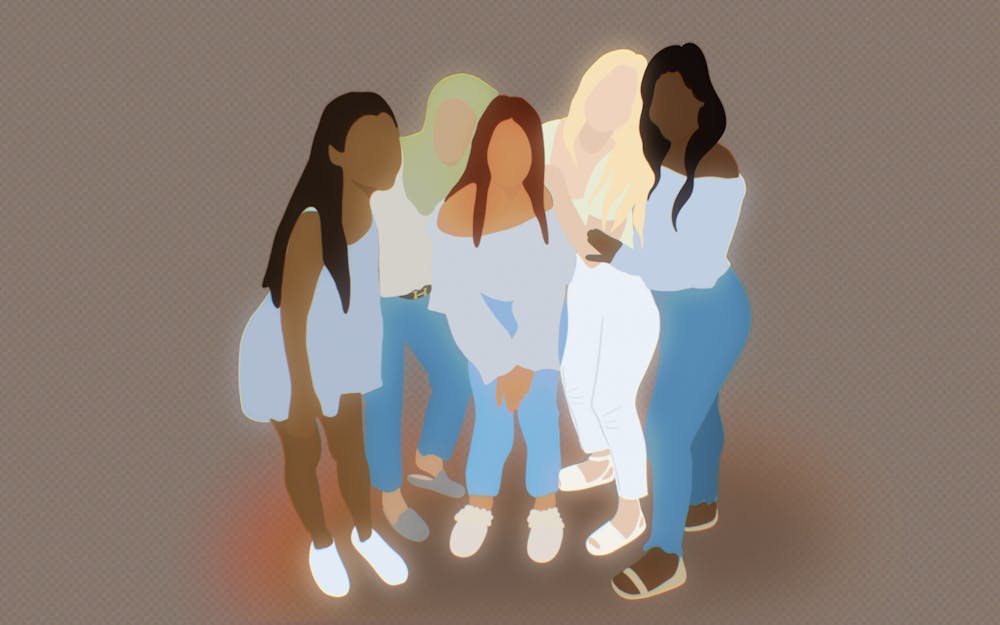As a high school upperclassman, IU senior Escavar Tatum took a tour of IU. He saw places like the Neal-Marshall Black Culture Center, the Asian Culture Center, the Latino Cultural Center and the LGBTQ+ Culture Center.
His tour guide mentioned the popularity of these culture centers and how Bloomington’s campus was full of cultural diversity. Tatum said that these characteristics helped solidify his decision to attend IU.
Shortly after arriving, however, he realized that he had been shown a false image of the university.
IU is a predominantly white institution. According to College Factual, 68.6% of full-time undergraduate students at IU are white. This lack of diversity is a problem. Without supporting individuals of different backgrounds, universities encourage discrimination against and discomfort for the few distinctive individuals that do attend the institution.
Another problem is IU’s portrayal of itself to be much more ethnically heterogeneous –– meaning it varies in things like cultures, traditions and languages –– than it actually is.
I attended the IU winter 2021 commencement ceremony. Before the graduates were honored for their achievements, a powerpoint ran for guests to watch.
The slideshow featured images of diverse friend groups, and almost every slide featured an individual of color. While representation is a characteristic that many organizations, companies and brands seek to promote, performative representation is easy to identify.
There have been countless instances where I was the only person of color in a class. There have been even more occasions where I felt unappreciated by the white people around me.
For instance, when I go to a party with my white friend –– and the party is full of white girls –– I constantly feel ignored. I'm the person they talk to only when there’s nobody else to converse with. The different cultures of IU simply do not come together as easily or as smoothly as they are portrayed.
Tatum shares similar experiences in both social and educational settings. His ethnicity regularly affects how he is received by others.
“Even in the classroom, with group work and things like that, a lot of people don’t wanna be my partner,” Tatum said. “Or I’m always the last one to get chosen.”
Tatum tends to hang out with other minority students because of his experiences at IU. Marginalized individuals usually understand what he’s been through better than white students, who are often uncomfortable around him.
“Are you comfortable introducing me to your parents on parents weekend?” Tatum said.
Additionally, the majority of peer groups at IU remain ethnically homogeneous. It is rare that I see a table of different cultures engaging in casual, friendly conversation.
Tatum said that even in places like the library, many Black people and other people of color go to the fifth floor to study. He said the other floors just don’t feel welcoming because of the white students' domination.
“I get looked at as if I don't belong here when I got accepted just like you got accepted,” Tatum said.
Tatum said because of the underlying biases individuals have, they hold preconceived notions about other cultures.
“With the upbringing that a lot of people have, the school doesn’t do too much to break that down,” Tatum said. “It’s like they’re okay with it.”
Today, people have access to so much information due to the shifting of the communications landscape. It is so easy to connect with individuals who share similar experiences as the ones shared by students of color at a predominantly white institution.
Doesn’t IU know better than to draw this false image of their students when the truth is so easy to uncover?
“You see Black kids and Latinx kids and Asian kids on the flyers and on the dining marketing,” Tatum said. “It’s giving the notion that this school is really diverse when it really is not diverse at all.”
Tatum said that IU should work alongside cultural centers to help promote their events. In doing this, the university can encourage the coming-together of students of different backgrounds. This can begin with placing the same level of significance on cultural events as other IU events in university newsletters.
“I would rather take diversity over news about a squirrel,” Tatum said. “Especially since IU prides itself on being ‘home.’”






